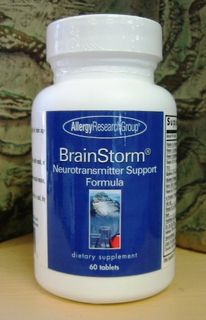Are brainstorms dead? They probably are, if this describes your brainstorms.
They’re held in a featureless conference room. Very likely there’s not enough oxygen.
No beverages or food.
Zero brainstorm supplies, like flipchart paper, markers, crayons, toys or anything fun to play with.
Little direction, purpose, insights, information, agenda or facilitator. Or, if there is a facilitator, they talk about themselves or their ideas.
The wrong people are invited. More likely, the right people couldn’t attend. So the people who weren’t invited originally – probably for good reason – become the front-bench by default.
The brainstorm is scheduled for one precise hour, and damn it! – people had better invent the perfect, new, unique, never-before-seen idea in that hour. Or else!
Brainstorms don't deserve this
Brainstorms can work very well, but they need thought and consideration in advance.
A good brainstorm should be like the perfect party. Energized and fun. Interested people. Good food and drink. The facilitator acts like a good host.
(In fact, like the best host, they’ve already worked their bum off behind the scenes to make the party ….er, brainstorm look spontaneous and natural.)

Consider these tips before your next brainstorm for better results
As with any meeting, a bit of ground work in advance if you want the brainstorm to be successful.
Be clear on the objective.
What do you need the idea/solution to do?
Highlight the problem(s) the ideas must address.
If the solution doesn’t impact the problem, no amount of good news will improve a bad idea. The good news – benefits, features, USPs, assets, trends – are your messages.
Bring true insights (not assumptions) about the end user.
What do you know about them outside of their demographics? What psychographics make this audience unique?
Make the meeting fun.
Ice-breakers to warm up the creative side of the brain. Food and beverages, preferably with the two things which naturally speed up the body: sugar and caffeine, or even better, chocolate. Bring fresh fruit as an alternative.
Supplies are necessary.
You’ll need the basics, like pens, or markers, flipchart paper to write ideas, magazines or other throw-away picture books to inspire imaginations.
Stand up!
The body works much better when it is not sitting. Besides, brainstorms should only last 20 minutes to create urgency, or to bring in a new round of fresh thinkers to build on the first group’s ideas, and so on.
Decide how you will select the best idea.
Articulate before the brainstorm what criteria you’re going to use to select the best idea. Choose whatever you like, but don’t tell anyone! Stick it in your back pocket, and share when the brainstorms are finished. But, invite the participants to tell you why their favourite ideas fit the criteria.
Before I close …
You will have bad brainstorms. They simply happen, even to the best people and most thoroughly organised meeting. Here are some suggestions on what to do if you’ve had an unsuccesful brainstorm.
What other things have you done to make your brainstorms more productive? Please add your comments below.


1 Comment
Amen, Andy.
The one thing I will add (because I know you won’t) is that sometimes you need to reach outside of your own organization to find a facilitator who can SHOW you how a great brainstorm should work.
A couple of days with a great facilitator not only can deliver better results, it also will help you and your colleagues see how a productive brainstorming session should be run.